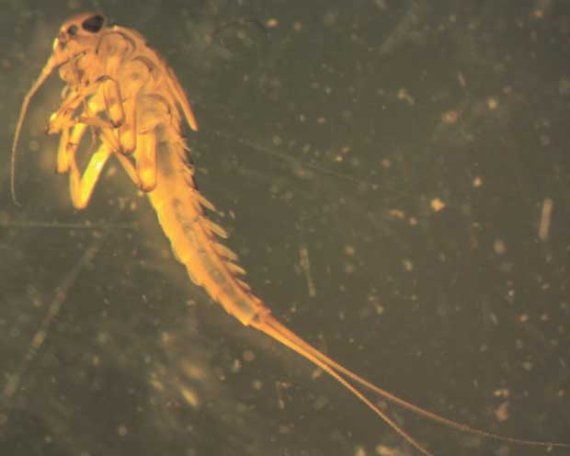The use of the insecticide imidacloprid is coming under fire. The substance is suspected of being implicated in the deaths among bees. But that is not all, because imidacloprid can also end up in surface water. And this has consequences for insect life, shows research by Paul den Brink, professor of Chemical Stress Ecology. Together with colleagues, Van den Brink established both the acute and the chronic sensitivity levels to imidacloprid of seven freshwater species (including the amphipods, the notonectidae and the ephemoptera, or mayflies). This was done in the lab by exposing the mini-creatures to incremental concentrations of the insecticide over periods of 4 and 28 days. From the short-term tests it emerged that the mayflies and caddisflies, in particular, were a lot more sensitive than the rest. The tests were done on the larvae of these species. The researchers established both the concentrations at which half the insects die (LC50) and those at which half of them are immobilized (EC50). The effects of chronic exposure were even clearer. The tested mayflies (two species) turned out to be much more sensitive than the rest and gave up the ghost at surprisingly low concentrations. ‘These values are much lower than the data available in the literature,’ comments Van den Brink. They therefore add significant new information to the existing knowledge. Whether it means that mayflies in the Netherlands are endangered is hard to say, says Van den Brink. The levels of pollution in Dutch ditches and ponds are recorded on the website www.bestrijdingsmiddelen.nl ‘Concentrations at around the chronic EC50 level are certainly found in this country,’ says Van den Brink. ‘But you don’t know whether these concentrations remain over long periods of time. A re-evaluation of the use of imidacloprid is currently being carried out by the Ctgb, the board for the authorization of crop protection treatments and biocides. They should certainly include these data in their risk analysis.’
Mayflies sensitive to imidacloprid
Larvae much more sensitive than believed.Concentrations in surface water may pose risk.

